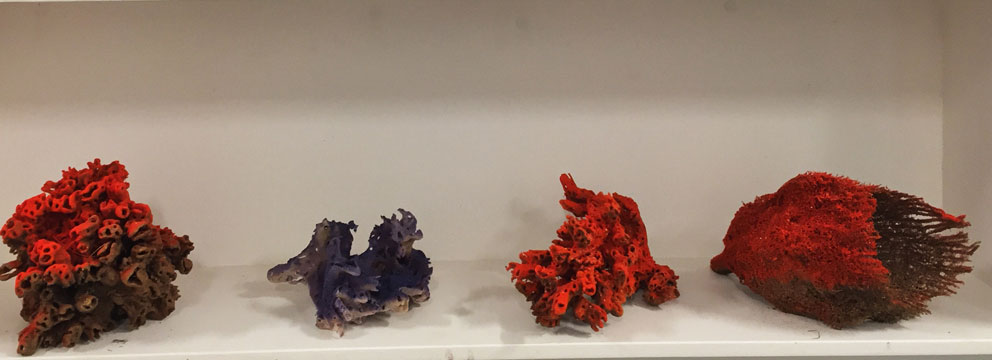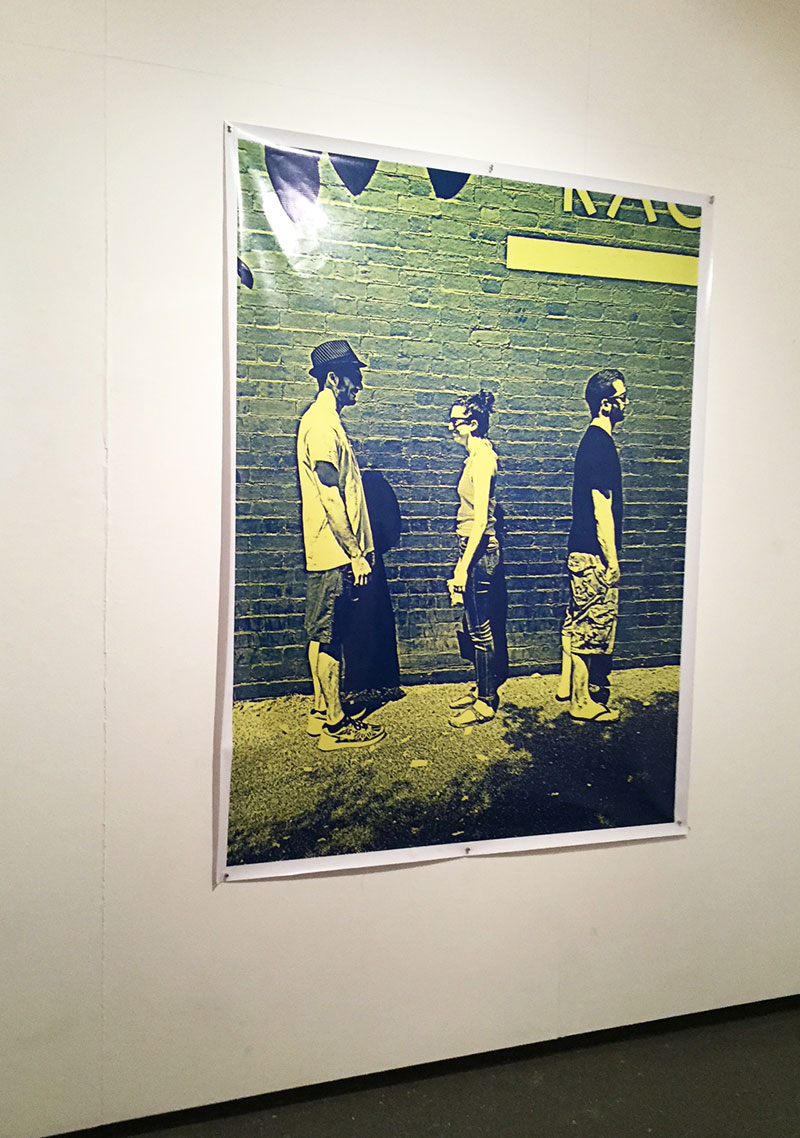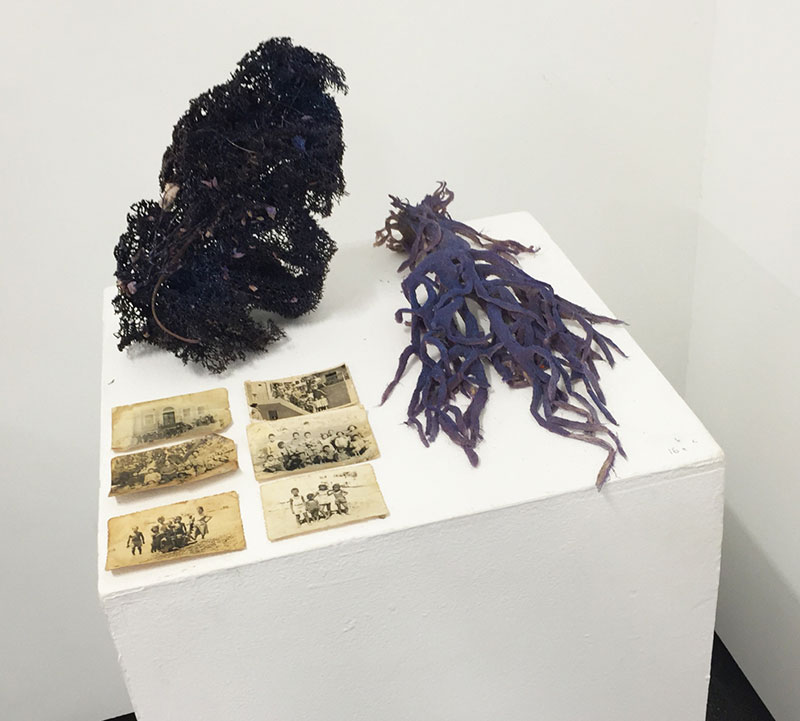
When Koulla Roussos returned to live in her hometown of Darwin in 2011, she not only set about forging a career as an independent artist and curator but also sought to recalibrate the city in terms of its civic-image. Flash Art (2013), curated by Roussos, asked local artists to focus on “old” Darwin through the icon of its former Don Hotel. The exhibition was shown in a hotel (The Cavenagh) and enlivened thinking around the broader issue of Darwin’s built and cultural heritage which Roussos further explored in Origin of a City (2014), an exhibition she curated with the NT State Library. In TaNTtrum (2013–14), Koulla collaborated with Jonathon Saunders to make comic and poster art-inspired work set in the streets of Darwin, and displayed in street and gallery contexts. In Pride NT – Our Queer History (2015), Roussos co-curated a long-running exhibition at the NT State Library, commemorating 30 years of the Darwin Pride association through archival and historical narratives and the work of queer artists including Roussos.
Concrete – Exodus (2016) is part of Roussos’s own recalibration as a born-and-bred member of Darwin’s Greek community who form a significant part of the city’s formative history and identity as well as its physical construction. In this exhibition, Roussos collaborated with fellow Darwin Greek artist Rita Macarounas, each producing solo bodies of work that together carved out a very deliberate and potent space for exploring Darwin’s Greek Diasporic experience.

For Roussos, it was her most significant body of work to date, a display titled Concrete Part 1, involving digital film and digital prints along with photos from the family archive – mediums already familiar to her emergent practice. Sculpture was a surprising new dimension, realised through a series of spray-painted sea sponge and seaweed forms which were presented in a wall cabinet. The sea sponge is a direct reference to Roussos’s Kalymnian heritage – once the source of a thriving export industry in Kalymnos, the sponge has become object of cultural kitsch, a marker in every Kalymnian household. Roussos also imagines the Diaspora and cultural transformation in terms of the sea. Her artist statement for the exhibition begins:
Evolution: Given this city’s name and evolutionary past, I often joke how the first Kalymnians recruited to dive for pearl in the murky Arafura sea, sniffed other opportunities for autonomy through prosperity, and stepped out of the sea, transmorphing into builders and concreting Darwin.
The idea of “concreting Darwin” does not make for any great cultural legacy, with Roussos and the exhibition highly critical of the stereotype – that Darwin’s Greek community prides profit and quick-fix property development above everything else – and of community attitudes supporting this stereotype. The exhibition was timed to coincide with Darwin’s Greek Glenti Festival, an annual celebration of Greek culture that generally favours food, traditional dance and song above any critical or contemporary art dialogue. Roussos’s Concrete Part 1 was a direct stab at the perceived cultural myopia of the Darwin Greek community and yet her work also dealt with very personal family history. This was an interesting point of tension and showed a commendable courage of conviction in Roussos’s manipulation of images of her forebears. In her film-based work Ghosts, for example, she “resurrected the digital ghost of two great grandmothers” – Thimelina and Eirini. The fact that Roussos had no direct experience of these women seems to have given her more licence to manipulate and interrogate their digital presence. This could seem a bit loose or even disrespectful, but as a direct descendant Roussos is also surely entitled to frame her own ancestral conversation.
One of her “Notable omissions” (as discussed in her Artist Statement) is any visual reference to the bronze statue of Roussos’s great grandmother Eleni that stands in the middle of Darwin’s Smith Street Mall. Roussos also “deliberately omitted the use of concrete in this exhibition”. She saved this material engagement for Concrete Part 2 shown concurrently at the Northern Centre for Contemporary Art, which featured a performative video and sea sponge sculptures – all suitably and thoroughly concreted.

Roussos conceived her two parts by gender, with the matriarchal focus of Concrete Part 1 at Wood St Gallery well complemented by Rita Macarounas’s Exodus series of photographic and screen-printed works portraying her own children. Macarounas represents the fifth generation of migration in her family; after growing up in Darwin she moved to Greece as a young adult and raised a family. Now it is she and her adult children – Alex, George, and Aphrodite – who have become economic migrants, relocating to Australia because of Greece’s current financial collapse.
Macarounas’s prints document her children in various public settings in Melbourne where they live. The images have a kind of pop, street art sensibility with some of them shot inside the National Gallery of Victoria (NGV) during its Andy Warhol | Ai Weiwei exhibition (2015–16). Like Roussos, Macarounas is keenly aware of the cultural capital inscribed by this art gallery setting, an engagement which eluded her parent’s generation but which her better-educated children can now easily access. The NGV exhibition is a metaphor for the process of renegotiating a place in Australian society. As part of her own exhibition, Macarounas recorded short interviews with each of her children, talking about the move from Athens to Melbourne.
The collaboration with Roussos succeeded in pushing Macarounas’s work into more conceptual terrain, away from her design-oriented background (interior design, Greek Orthodox icon painting, and ceramics) and into a more politicised medium like screen-printing which she explored for this exhibition. Together, this duo represents a new cultural force in Darwin which in many ways exposes the white-bred world of contemporary art along with the limitations and challenges characterising their immediate cultural milieu.

